
IT
EN
Manuale di installazione, uso e manutenzione
Installation, operation and maintenance manual
RILEVATORE VOLUMETRICO DA
ESTERNO IN TRIPLA TECNOLOGIA CON
ANTIMASCHERAMENTO
TRIPLE TECHNOLOGY VOLUMETRIC
DETECTOR FOR OUTDOOR USE WITH
ANTIMASKING FUNCTION
ART. / ITEM:
1871BOBBY/E
1875BOBBY-AM/E
1873BOBBY-AM
RILEVATORE BOBBY
DA ESTERNO CON
ANTIMASCHERAMENTO
BOBBY OUTDOOR
DETECTOR WITH
ANTIMASKING
MADE IN ITALYMADE IN ITALY
La dichiarazione CE del presente articolo è reperibile sul sito
www.lince.net.
L’installazione dei prodotti riportati nel presente manuale deve
essere eseguita da personale specializzato in possesso delle
dovute conoscenze tecniche; i prodotti sono stati progettati per
utilizzo in contesti domestici e civili.
The CE declaration of this item is available on www.lince.net
website.
The installation of the products listed in this manual must
be performed by specialized personnel with the necessary
technical knowledge; the products have been designed for use
in domestic and civil contexts.

2
LINCE ITALIA
- Istruzioni originali -
INDICE
1. INTRODUZIONE
Il rilevatore da esterno 1873BOBBY-AM è composto da 2 sensori
passivi dual PIR ed una microonda. L’elettronica particolarmente
evoluta è stata progettata per garantire le massime prestazioni
in ambiente esterno e a temperature rigide. I tre fasci sono
orientabili e permettono di ottenere una copertura orizzontale
distribuita su 170°. Il range di copertura dell’ infrarosso inferiore
è orientabile anche verticalmente e questo permette di ottenere
un range di copertura compreso tra 3 m e 18 m. I tre sensori,
gestiti da un microcontrollore, possono essere combinati tra loro
a seconda delle esigenze di installazione (triplo AND, MW in
AND con ogni PIR, AND dei PIR con MW esclusa). Se settato
in triplo AND permette la discriminazione degli animali (PET
IMMUNITY).
Nelle versioni (1873BOBBY-AM e 1875BOBBY-AM/E) dotate di
antimascheramento ad infrarossi attivi (EN 50131), la funzione
è stata implementata per rendere il rilevatore inattaccabile da
quanti potrebbero avere accesso al sito dove è installato durante
il periodo in cui il sistema risulta disinserito. Il rilevatore segnala
in questo modo, ogni tentativo di impedirne il funzionamento
bloccando (mascherando) il suo campo di rilevazione. Il ssaggio
del rilevatore può essere sia a parete che su palo (altezza 1 ÷
1,2 m).
La portata massima del rilevatore è garantita con
temperatura di 25 °C.
1. INTRODUZIONE ................................................................................................ 2
1.1 CARATTERISTICHE GENERALI ........................................................... 3
1.2 CARATTERISTICHE TECNICHE ........................................................... 3
1.3 CONTENUTO DELLA CONFEZIONE .................................................... 4
1.4 IDENTIFICAZIONE DELLE PARTI ......................................................... 4
2. INSTALLAZIONE............................................................................................... 5
2.1 AVVERTENZE GENERALI ..................................................................... 5
2.2 MONTAGGIO DEL RILEVATORE .......................................................... 5
2.3 COLLEGAMENTI ELETTRICI ................................................................ 8
2.4 CONFIGURAZIONE DEL RILEVATORE ................................................ 8
2.4.1 Descrizione dei LED .................................................................... 8
2.4.2 Regolazione portata della microonda .......................................... 9
2.4.3 Congurazione dei DIP-switch .................................................... 9
2.4.4 Regolazione PIR 2 ................................................................... 10
2.4.5 Funzionamento in AND ............................................................. 12
2.4.6 Antimascheramento .................................................................. 13
3. AREA DI COPERTURA ................................................................................... 13
4. ACCESSORI DISPONIBILI ............................................................................. 14
4.1 STAFFA ................................................................................................ 14
4.2 COVER PARAPIOGGIA ....................................................................... 14
4.3 KIT RISCALDATORE ...........................................................................14
4.4 RIALZO ................................................................................................ 14
4.5 CUNEO ................................................................................................ 14
5. RICERCA DEI GUASTI E/O MALFUNZIONAMENTI .................................... 15
6. MANUTENZIONE E VERIFICHE PERIODICHE ............................................. 15
7. SMALTIMENTO E ROTTAMAZIONE .............................................................. 15
Le informazioni riportate in questo manuale sono state compilate con
cura, tuttavia LINCE ITALIA S.r.l. non può essere ritenuta responsabile
per eventuali errori e/o omissioni. LINCE ITALIA S.r.l. si riserva il diritto
di apportare in ogni momento e senza preavviso, miglioramenti e/o
modiche ai prodotti descritti nel presente manuale. Consultare il sito
www.lince.net per le condizioni di assistenza e garanzia. LINCE ITALIA
S.r.l. pone particolare attenzione al rispetto dell’ambiente. Tutti i prodotti
ed i processi produttivi sono progettati con criteri di eco-compatibilità.
Il presente articolo è stato prodotto in Italia.
• L’aziendahaunsistemadigestionedellaqualitàcerticatosecondola
norma ISO 9001:2015 (n° 4796 - A)
• L’aziendahaunsistemadigestioneambientalecerticatosecondola
norma ISO 14001:2015 (n° 4796 - E)
• L’azienda ha un sistema di gestione della salute e sicurezza sul lavoro
certicatosecondolanorma45001:2018(n°4796-I)
The information in this manual has been issued with care, but LINCE
ITALIA S.r.l. will not be responsible for any errors or omissions. LINCE
ITALIA S.r.l. reserves the right to improve or modify the products
described in this manual at any time and without advance notice.Terms
and conditions regarding assistance and the product warranty can be
found at Lince Italia’s website www.lince.net. LINCE ITALIA S.r.l. makes
it a priority to respect the environment. All products and production
processes are designed to be eco-friendly and sustainable.
This product has been Made in Italy.
• Thecompanyhasacertiedsystemofqualitymanagementaccording
to ISO 9001:2015 (n° 4796 - A) standard.
• The company has a certied system of environmental management
according to ISO 14001:2015 (n° 4796 - E) standard.
• The company has a certied system of health and work security
managementaccordingto45001:2018(n°4796-I)standard.
-Translationoftheoriginalinstructions(originalinstructionsinItalian)-
CONTENTS
1. INTRODUCTION ............................................................................................... 2
1.1 GENERAL FEATURES .......................................................................... 3
1.2 TECHNICAL FEATURES ....................................................................... 3
1.3 PACKAGING CONTENTS ...................................................................... 4
1.4 PARTS IDENTIFICATION....................................................................... 4
2. INSTALLATION ................................................................................................. 5
2.1 GENERAL PRECAUTIONS ................................................................... 5
2.2 INSTALLING THE DETECTOR .............................................................. 5
2.3 DETECTOR WIRING ............................................................................8
2.4 DETECTOR SET-UP .............................................................................. 8
2.4.1 LEDs description ......................................................................... 8
2.4.2 MW range adjustment ................................................................. 9
2.4.3 DIP-switches conguration .......................................................... 9
2.4.4 PIR 2 adjustment ....................................................................... 10
2.4.5 AND mode operation ................................................................. 12
2.4.6 Antimasking ............................................................................... 13
3. COVERAGE AREA.......................................................................................... 13
4. AVAILABLE ACCESSORIES .......................................................................... 14
4.1 BRACKET .............................................................................................14
4.2 RAIN COVER ....................................................................................... 14
4.3 HEATER KIT ......................................................................................... 14
4.4 SPACER ............................................................................................... 14
4.5 WEDGE ................................................................................................ 14
5. TROUBLE SHOOTING ................................................................................... 15
6. MAINTENANCE AND PERIODIC CHECKS ................................................... 15
7. DISPOSAL AND SCRAPPING ........................................................................ 15
1. DESCRIPTION
The outdoor detector 1873BOBBY-AM is composed by two dual
PIR passive infrared sensors and one microwave. The advance
electronic of the detector has been designed and built to ensure
maximum performance in outdoor environment and in cold
temperatures.The three beams are adjustable and allow to get
a horizontal coverage of 170°. The coverage range of the lower
IR can also be adjusted vertically in order to obtain a coverage
range within 3 m and 18 m.
The three sensors, managed by a microcontroller, can be
combined with each other depending on the installation
requirements (triple AND, MW AND with each PIR, AND of PIR
with MW excluded). If set in triple AND allows discrimination of
animals (PET IMMUNITY).
In the versions provided (1873BOBBY-AM and 1875BOBBY-
AM/E) with anti-masking (EN 50131), the function has been
designed to make the detector immune to those who may have
access to the site where it is installed during the period in which
the system is switched off. In this way, the detector signals any
attempt to prevent its operation masking its detection eld. The
xing of the detector can be either on the wall or on a pole (height
from 1 to 1.2 m).
The maximum range of the detector is guaranteed
with a temperature of 25 ° C

3
LINCE ITALIA
1.1 CARATTERISTICHE GENERALI
• Tripla tecnologia da esterno;
• Due sensori PIR;
• Sensori infrarosso a doppio elemento basso consumo con ltro
UV;
• Regolazione di precisione dei fasci del PIR inferiore (sistema
brevettato);
• Lente di Fresnel resistente ai raggi UV;
• Contenitore in policarbonato anti UV;
• Staffa di ssaggio a parete in acciaio inox;
• Staffe di ssaggio a palo in acciaio inox (disponibile su
richiesta)
;
• Antimascheramento a infrarossi attivi (due coppie a
protezione di ogni porzione di lente);
• Anti-accecamento solare tramite ltri meccanici ad alta
efcienzia;
• Scheda elettronica tropicalizzata orientabile a 90°;
• Sensibilità regolabile e indipendendte per ogni tecnologia;
• Funzione AND/OR e combinazioni selezionabili:
1.1 GENERAL FEATURES
• Triple technology for outdoor use;
• Two PIR sensors;
• Infrared sensors low consumption double element and UV
lter;
• Low PIR beam precision adjustment (patented system);
• UV rays resistant Fresnel Lens;
• UV resistant polycarbonate case;
• Stainless steel wall xing bracket;
• Stainless steel pole xing brackets (available on request);
• active infrared anti-masking (two pairs protection of each
lens portion);
• Anti solar blinding through mechanical with high efciency
lters;
• Conformal coated electronic board adjustable up to 90°;
• Adjustable and independent sensitivity for each technology;
• AND/OR and combination of them selectable function.
1.2 CARATTERISTICHE TECNICHE
1871BOBBY/E 1875BOBBY-AM/E 1873BOBBY-AM
Alimentazione
Power supply 9 ÷ 15 Vcc
Consumo @ 12 Vcc
Current consumption @ 12 Vdc 20 mA standby
Contatti di allarme e antimasking
Alarm,maskingcontacts MOS FET relay 100 mA 35 V, 2 Ω max
Tempo di allarme
Alarm time 1 s
Antimasking
Antimasking NO IR-attivi a 2 livelli
2 levels active IR
LED di segnalazione
Signal LEDs 3 4
Microonda
Microwave NO 24 GHz
Ampiezza orizzontale del singolo fascio
Horizontal Coverage (single beam) 85°
Escursione orizzontale della copertura
Horizontal Coverage range ±45°
Staffa per ssaggio a muro
Bracketforwallxing
In acciaio inox (in dotazione)
Stainless steel (supplied)
Grado di protezione contenitore
Enclosuredegreeofprotection IP 44
Classe ambientale
Environmentalclassication Class IV (EN 50131-1:2006-10)
Grado di sicurezza
Security grading Grade 2 (EN 50131-2-2:2008-01) Grade 3 (EN 50131-2-4:2008-01)
Temperatura di esercizio
Operating temperature -25 °C ÷ 60 °C
Dimensioni esterne (LxPxA mm)
Externaldimensions(WxDxHmm) 81x76x189
Peso (g)
Weight(g)
370 (compreso staffe)
370 (including brackets)
Contenitore
Casing
Policarbonato resistente UV
UV resistant polycarbonate
Portata di rilevazione
Detection range 3 ÷ 18 m
1.2 TECHNICAL FEATURES

4
LINCE ITALIA
1.3 CONTENUTO DELLA CONFEZIONE
Fig. 1
Tabella 1
Part. Identicazione
ARilevatore
BStaffa
CKit di ssaggio al muro
DIstruzioni
C
AB
D
1.3 PACKAGING CONTENTS
Table 1
Ref. Identication
ADetector
BBracket
CKit for wall mounting
DIstructions
Fig. 2
1.4 IDENTIFICAZIONE DELLE PARTI 1.4 PARTS IDENTIFICATION
Tabella 2
Part. Identicazione
AViti per ssaggio su staffa
BVite di ssaggio del coperchio
CCoperchio con lente di Fresnel
DPomello di regolazione PIR2 basso
ESupporto con possibilità di rotazione di 150°
FMicroswitch antistrappo (solo se ssato con la vite A)
GStaffa ssaggio a parete in acciaio Inox
HStaffe a “U” (qtà 2) – (non fornite) contenute nel kit ac-
cessorio art 001805/00102AA
IVite metrica M4 x 6 inox per ssaggio staffe ad “U” (qtà
4) contenute nel kit accessorio art 001805/00102AA
LViti metriche M4 x 10 inox (qtà 4) contenute nel kit ac-
cessorio art 001805/00102AA
MLED per antimascheramento
L
A
D
G
I
H
E
F
I
L
C
B
M
M
Table 2
Ref. Identication
AScrews for bracket xing
BCover xing screw
CCover with Fresnel lens
DAdjusting knob for low PIR2
E150° horizontally rotating device
FAntitamper micro switch (only if xed with screw A)
GStainless steel wall xing bracket
H“U” Shaped bracket (2pcs) – (not supplied) available in
kit 001805/00102AA
IStainless Steel metric screw M4 x 6 for “U” brackets
xing (4pcs ) enclosed into kit item 001805/00102AA
LStainless Steel metric screw M4 x 10 enclosed into kit
item 001805/00102AA
LAnti-masking LED

5
LINCE ITALIA
Fig. 3
2. INSTALLAZIONE
2.1 AVVERTENZE GENERALI
Prima dell'installazione vericare le seguenti condizioni:
• la parete non deve presentare avvallamenti o sporgenze
eccessive;
• installare il rilevatore su superci rigide prive di vibrazioni;
• evitare il posizionamento del rilevatore vicino a fonti di
calore o alla luce diretta del sole;
• evitare la riessione dell’energia elettromagnetica su ampie
superci quali, ad esempio, specchi, pareti metalliche, etc.;
• evitare di puntare il rilevatore su lampade uorescenti o
comunque di porlo nelle immediate vicinanze delle stesse.
• Per i collegamenti è consigliabile utilizzare un cavo
schermato e, preferibilmente, un cavo per ogni rilevatore.
• Separare i cavi dell’impianto di allarme da quelli della rete
elettrica.
Il rilevatore può essere installato in ambiente esterno (secondo
quanto prescritto dalla normativa EN 50131-1 nella classe
ambientale IV).
• Evitare di puntare il rilevatore verso oggetti in movimento o,
se ciò risultasse inevitabile, prestare la massima cura nelle
regolazioni al ne di evitare falsi allarmi.
• Apporre sempre il coperchio con lente di Fresnel prima di
effettuare le prove di copertura, senza lente il rilevatore non
funziona.
2.2 MONTAGGIO DEL RILEVATORE
L’altezza di installazione deve essere compresa tra i 100 cm min.
ed 120 cm max (terreno non in pendenza).
Se nell’area di copertura c’è la possibilità che vi sia presenza di
animali di medie dimensioni si consiglia di installare il rilevatore
ad una altezza tale da evitare che il fascio superiore rilevi la
presenza dell’animale stesso.
Fissare la staffa di ancoraggio a muro, o su palo, stabile ed
immune da oscillazioni
• Svitare la vite B (g. 2) e levare il coperchio con lente
• Fissare l’unità rilevatore ad innesto (vedi g. 6) sulla staffa
ed avvitare le due viti A (g. 2), avendo cura di passare il
cavo dei collegamenti come riportato nelle g. 4 e 5.
• Effettuare le regolazioni del rilevatore agendo sul pomello
di regolazione del PIR 2 (inferiore),
Applicare il coperchio con
lente ssandolo con la vite B (g. 2).
Attenzione: la massima distanza di copertura (18 m) si
ottiene solamente installando il rilevatore a 120 cm da terra
2. INSTALLATION
2.1 GENERAL PRECAUTIONS
Before starting the installation, make sure that:
• the wall does not have any pronounced depressions or
protrusions;
• install the detector on rigid surfaces, free of vibrations;
• avoid to x the detectors near to heat sources or at direct
sunlight;
• avoid electromagnetic energy reection on wide surfaces
such as mirrors, metal walls, etc.;
• avoid to x the detector in front of uorescent lamps or in
proximity of them.
• Connections shielded cable is suggested and one cable per
detector is preferred.
• Separate the alarm system cables from the mains cables.
The detector can be installed outdoors (according to the standard
EN 50131-1 in environment IV).
• Avoid to direct the detector towards moving objects or, if
impossible, please take care in adjusting the detector in
order to avoid false alarms.
• Be sure to install the cover with Fresnel lens before the
detector testing. Without cover, the detector doesn’t work.
2.2 MOUNTING THE DETECTOR
Installation height must be between 1 m and 1.20 m (not tilted
ground).
If medium-sized animals might enter the coverage area, we
recommend installing the detector at a height that allows you to
prevent the upper beam from detecting their presence Fix the
support on a wall or on a stable pole
• Unscrew the B (g. 2) screw an remove the front cover with
lens.
• Screw up the detector (see g. 6) on the support using the
2 provided screws A (g. 2) passing through the connection
cable as shown in the gures 4 and 5.
• Lift up or take down the PIR 2 (lower) using the adjusting
knob to choose the protected area
• Mount the front cover xing it with screw B (see g. 2).
Important: the maximum detection range (18 meters) is
obtained only if the installation height is 120 cm.

6
LINCE ITALIA
Fig. 4
Fig. 5
Fig. 6
Fig. 7
• Effettuare 4 fori nel muro ed inserire
i tasselli
• Passare i cavi attraverso il foro della
staffa
• Fissare ora la staffa al muro o, se su
palo, seguire le indicazioni di g. 5.
Nel ssare la staffa al muro fare attenzione
alla perpendicolarità rispetto al terreno.
Nel caso di ssaggio su palo procedere
come illustrato in gura ssando la staffa
metallica principale alle due staffe da palo
(opzionali)
Per ottenere il passaggio
cavo, forare l’apposito
pretaglio utilizzando un
oggetto appuntito di adeguato
diametro, giravite o simile.
• Poggiare il corpo del rilevatore sulla staffa e farlo scendere
no in fondo per far coincidere i fori di ssaggio del corpo
con quelli della staffa
Dopo aver effettuato le regolazioni del
PIR 2, chiudere il rilevatore inserendo il
coperchio dall’alto verso il basso come
illustrato, quindi avvitarlo tramite la vite
metrica in acciaio inox in dotazione.
Fix the support onto the mounting support
with supplied screws.
Place the brackets (not included) around
the pole and fasten using the pole locking
screws.
• Make four holes on the wall and
insert the plugs.
• Pass the wires through the support
slot and x the metallic support on
the wall.
• To x the metallic support on the
pole, please see g. 5.
Fix the metallic support on the wall
perpendicularly to the ground
In order to obtain a passage
for the cables, break the plastic
pre-cut using a pointed object of
appropriate diameter, screwdriver
or similar.
• Locate the detector body on the metallic support and slide it
down, then x it using the supplied screws.
Adjust PIR2, close the detector inserting
downwards the coverage as shown in
gure.
Fix the cover using the metric screw.

7
LINCE ITALIA
Fig. 8
MONTAGGIO CORRETTO
Montare il rilevatore in posizione verticale e perpendicolarmente
al terreno.
CORRECT INSTALLATION
Position the detector vertically and perpendicularly to the ground
Fig. 9
Fig. 10
MONTAGGIO NON CORRETTO (rilevatore inclinato
verticalmente)
Se il rilevatore viene montato inclinato verso il basso la portata
può risultare ridotta.
MONTAGGIO NON CORRETTO (rilevatore inclinato
verticalmente)
Se il rilevatore viene montato inclinato verso l’alto il PIR basso
non garantisce la copertura in prossimità del suolo mentre il
PIR superiore copre una zona troppo alta.
WRONG INSTALLATION (detector tilted downwards)
If the detector is not installed perpendicularly to the ground, as
shown, operational reliability may result decreased.
WRONG INSTALLATION (detector tilted upwards)
If the detector is not installed perpendicularly to the ground, as
shown, operational reliability may result decreased

8
LINCE ITALIA
Fig. 11
Fig. 12
MONTAGGIO NON CORRET-
TO
Accertarsi che il rilevatore sia
montato perpendicolarmente
rispetto al terreno.
Il rilevatori sono equipaggiati
con speciali ltri per i disturbi
dei raggi solari; nei limiti del
possibile è comunque consi-
gliata l’installazione evitando il
sole diretto
WRONG INSTALLATION
Take care to install the detector
perpendicularly to the groung.
The detectors are designed
to avoid any light disturban-
ce. However too strong light
as direct sunlight may cause
unstable condition of detector,
for example direct sunlight. It’s
recommended to avoid such
type of installation.
Fig. 13
2.3 COLLEGAMENTI ELETTRICI
POWER: Alimentazione 12
Vcc (10 ~ 15 Vcc)
MASK: Uscita antimask:
contatto normalmente chiuso a
riposo (solo per 1875BOBBY-
AM/E e 1873BOBBY-AM).
TAMPER: Uscita per la linea
Antisabotaggio 24h.
ALARM: Uscita allarme:
contatto normalmente chiuso a
riposo.
2.4.1 Descrizione dei LED
Colore Colour
LED 1 rosso: allarme LED 1 red: alarm
LED 2 giallo: microonda (solo per
1873BOBBY-AM)
LED 2 yellow: microwave (only for
1873BOBBY-AM)
LED 3 verde: PIR 1 (Superiore) LED 3 green: PIR 1 (Upper)
LED 4 verde: PIR 2 (Inferiore) LED 4 green: PIR 2 (Lower)
Tabella 3
2.4.1 LED descritpion
Table 3
2.3 DETECTOR WIRING
POWER: Power 12 Vdc
(10 ~ 15 Vdc)
MASK: Anti-mask output:
normally closed contact in
standby (only for 1875BOBBY-
AM/E AND 1873BOBBY-AM).
TAMPER: 24 h Anti-tamper
output.
ALARM: Alarm output: normally
closed relay in stand by.
2.4 CONFIGURAZIONE DEL RILEVATORE 2.4 DETECTOR SET-UP

9
LINCE ITALIA
Fig. 14
2.4.2 Regolazione portata microonda
Si raccomanda di diminuire
la sensibilità della microonda
in rapporto alla distanza di
copertura desiderata.
2.4.3 Congurazione dei DIP SWITCH
DIP 1 DIP 2 Descrizione del funzionamento
OFF OFF PIR 1 / PIR 2: sensibilità ALTA
OFF ON PIR 1 / PIR 2: sensibilità MEDIO-ALTA
ON OFF PIR 1 / PIR 2: sensibilità MEDIO-BASSA
ON ON PIR 1 / PIR 2: sensibilità BASSA
DIP 3 DIP 4
Logica di
funziona-
mento
Descrizione del funzionamento
OFF OFF
PIR1 AND
PIR2 AND
MW
Uscita allarme attiva solo quando
tutte e tre le tecnologie rilevano la
presenza.
Per le versioni senza MW, que-
sta congurazione equivale a
PIR1 AND PIR2.
Nota: Utilizzabile nella maggior
parte delle installazioni esterne
OFF ON
(PIR1 OR
PIR2)
AND MW
Uscita allarme attiva quando la
MW ed uno qualsiasi dei due PIR
rilevano la presenza.
Per le versioni senza MW, que-
sta congurazione equivale al
solo PIR2.
Nota: Non consigliata in ambienti
particolarmente ostili
ON OFF PIR1 AND
PIR2
Uscita allarme attiva quando en-
trambi i PIR rilevano la presenza;
non viene gestita la MW
Nota: La rilevazione della MW non
ha inuenza sulle prestazioni del
rilevatore.
Per le versioni senza MW, que-
sta congurazione equivale al
solo PIR1
Nota: Non consigliata in ambienti
particolarmente ostili
ON ON
PIR 1 AND
MW
(NO PIR2)
Uscita allarme attiva quando il
PIR1 e la MW rilevano la presen-
za.
Nota: non consigliata in ambienti
particolarmente ostili.
Per le versioni senza MW, que-
sta congurazione equivale a
PIR1 AND PIR2.
ON OFF
DIP 5
Antimask alta sensibilità Antimask bassa sensibilità
DIP 6
LED spenti LED sempre accesi
2.4.2 MW range adjustment
Adjust the microwave
sensibility in relationship to
the needed detection range.
2.4.3 DIP SWITCHES conguration
DIP 1 DIP 2
Operation description
OFF OFF PIR 1 / PIR 2: HIGH sensitivity
OFF ON PIR 1 / PIR 2: MEDIUM-HIGH sensitivity
ON OFF PIR 1 / PIR 2: MEDIUM-LOW sensitivity
ON ON PIR 1 / PIR 2: LOW sensitivity
DIP 3 DIP 4
Operation
logic Operation description
OFF OFF
PIR 1 AND
PIR 2 AND
MW
Alarm output active only when
all three technologies detect the
presence.
For versions without MW, this
conguration is equivalent to
PIR1 AND PIR2.
Note: it can be used in most
outdoor installations.
OFF ON
(PIR 1 OR
PIR 2) AND
MW
Output alarm active when the
MW and one of the two PIR de-
tect a presence.
For versions without MW, this
conguration is equivalent to
PIR2 only.
Note: not recommended in par-
ticularly hostile environments.
ON OFF PIR 1 AND
PIR 2
Alarm output active when both
PIRs detect a presence; the
MW is not managed.
Note: the detection of the MW
does not affect the performance
of the detector.
For versions without MW, this
conguration is equivalent to
PIR1 only.
Note: not recommended in par-
ticularly hostile environments.
ON ON
PIR 1 AND
MW
(NO PIR2)
Alarm output active when PIR1
and MW detects a presence.
Note: not recommended in par-
ticularly hostile environments.
For versions without MW, this
conguration is equivalent to
PIR1 AND PIR2.
ON OFF
DIP 5
Anti-mask high sensibility Anti-mask low sensibility
DIP 6
LEDs off LEDs always ON

10
LINCE ITALIA
Fig. 15
Fig. 16
Fig. 17
2.4.4 Regolazione PIR 2
Effettuare la regolazione del PIR2 (inferiore) tramite la vite di
regolazione dopo aver installato il rilevatore a 120 cm dal suolo.
Tacche di riferimento per le diverse portate del PIR 2.
2.4.4 PIR 2 adjustment
Once the detector has been installed at 120 cm from the ground,
adjust the PIR2 (lower) using the adjustment screw.
Position adjustment related to different lower PIR 2 range.
1.20 m
3 m 18 m
8 m
5 m 16 m
Posizione D / Position D
1.20 m
3 m 18 m
8 m
5 m 16 m
Posizione E / Position E
Tabella 4
Posizione PIR2 Distanza
A3 m
B5 m
C8 m
D16 m
E18 m
Table 4
PIR2 Position Range
A3 m
B5 m
C8 m
D16 m
E18 m

11
LINCE ITALIA
Fig. 18
Fig. 19
Fig. 20
Se l’oggetto in movimento risulta essere particolarmente grande
(per esempio un’automobile) c’è la possibilità che il rilevatore
possa rilevarne la presenza anche a distanze maggiori di 18 m.
Quando si imposta la funzionalità del rilevatore in triplo AND (Dip
3 e 4 in OFF) la distanza che si ottiene tramite la regolazione del
PIR 2 (basso) è in realtà la distanza massima di rilevazione del
rilevatore.
If the object in motion is very large (for example a car) there is
possibility that the detector can detect its presence even if it’s
farther than 18 m.
If the detector is set in triple AND (Dip 3 and 4 in OFF position)
conguration, the maximum distance of detection is the one
setted through the Adjustment of the PIR2.
1.20 m
3 m 18 m
8 m
5 m 16 m
Posizione A / Position A
1.20 m
3 m 18 m
8 m
5 m 16 m
Posizione B / Position B
1.20 m
3 m 18 m
8 m
5 m 16 m
Posizione C / Position C

12
LINCE ITALIA
Fig. 21
Fig. 22
Fig. 23
2.4.5 Funzionamento in AND
Esempio di rilevamento in modalità triplo AND (dip 3 e 4 in
OFF)
( 1 ) NO ALARM
L’animale viene rilevato da due delle tre tecnologie (PIR basso
e MW) per cui l’allarme NON si attiva.
( 2 ) NO ALARM
La persona viene rilevata da due delle tre tecnologie (PIR alto e
MW) per cui l’allarme NON si attiva.
( 3 ) ALARM
La persona viene rilevata da tutte e tre le tecnologie (PIR basso
+ PIR alto + MW) per cui si attiva lo stato di allarme.
Attenzione: le illustrazioni fanno riferimento alla modalità
di funzionamento in triplo AND, se si decide di utilizzare
impostazioni diverse (vedere par. 2.4.3, DIP Switch 3 e 4 in ON)
si hanno allarmi anche negli esempi in g. 22 e 23.
( 1 ) NO ALARM
The pet is detected only by two of the three sensor elements
(PIR low and MW). The alarm is not enabled.
Example of detection in triple AND conguration (dip 3 and
4 in OFF position
2.4.5 AND mode operation
The body is detected only by two of the three sensor elements
(PIR high and MW). The alarm is not enabled.
The body is detected by the three sensor elements (PIR low +
PIR high + MW). The alarm is enabled
Warning: the examples are referred to the triple AND set up. In
case of different set up (see para. 2.4.3, DIP Switches 3 and 4 in
ON position) alarms are enabled also in the previous examples
(see g. 22 and 23).
( 2 ) NO ALARM
( 3 ) ALARM

13
LINCE ITALIA
2.4.6 Antimascheramento
Il rilevatore 1875BOBBY-AM/E e 1873BOBBY-AM è dotato
di antimascheramento a infrarossi attivi per la protezione dei
sensori piroelettrici, che genera un segnale di manomissione
entro 3 minuti.
L’uscita dedicata a questa funzione è il morsetto denominato
MASK (v. g. 13).
In una installazione tipica questo morsetto può essere collegato ad
una linea attiva 24h o ad un ingresso di centrale opportunamente
programmato per l’invio di messaggi di anomalia. Quando il
rilevatore rileva un tentativo di mascheramento i quattro LED
lampeggiano simultaneamente no a quando permane la
condizione di mascheramento. Per abilitare il funzionamento
corretto della rilevazione di mascheramento (Anti-masking),
è necessario consentire al rilevatore di studiare ed analizzare
automaticamente le condizioni ambientali dell’area che deve
proteggere. Questa procedura è obbligatoria per assicurare il
corretto funzionamento del canale antimascheramento.
La procedura da seguire è la seguente:
1) Effettuare i collegamenti alla morsettiera del rilevatore la-
sciando il dip switch in OFF.
2) Dopo aver dato alimentazione, chiudere il coperchio ed effet-
tuare tutte le prove di portata necessarie per il funzionamento
desiderato.
3) Riaprire il coperchio e impostare con il dip switch 5 la sensibi-
lità.
4) Chiudere immediatamente il coperchio (entro 10 secondi al
massimo).
5) Tenersi fuori dall’area di copertura del rilevatore per circa 4
minuti afnché, durante questo periodo, non venga rilevata
nessuna presenza e vericare che non vi siano oggetti nel
raggio di 1 m.
2.4.6 Anti-masking
The detector 1875BOBBY-AM/E e 1873BOBBY-AM is equipped
with an active IR anti-masking function to protect the pyroelectric
sensors. It emits a tampering signal within 3 minutes.
The output of this function is the MASK terminal block (see g.
13).
In a standard conguration, this terminal block can be connected
to a 24h active line or to a control unit input appropriately pro-
grammed to send fault messages. When the detector identies
a masking attempt, the four LEDs ash simultaneously until the
masking condition is resolved. To enable the correct operation of
the masking detection system (Anti-masking), allow the detector
to study and analyse the environmental conditions of the area
to be protected. This procedure is mandatory to guarantee the
correct operation of the anti-masking channel.
Follow the procedure below:
1) Make the connections to the detector terminal box, leaving
the dip switch set to OFF.
2) Once powered, close the lid and run all the ow tests requi-
red.
3) Open the lid and set with the dip switch 5 the sensibility.
4) Close the lid immediately (maximum within 10 seconds).
5) Keep out of reach of detector for about 4 minutes in order that
not detected any presence and pay attention that there are no
objects within 1 m.
3. AREA DI COPERTURA 2. COVERAGE AREA
Fig. 24
Le zone in grigio non possono essere coperte; le
zone tratteggiate potranno essere coperte ruotando il
meccanismo interno.
Grey zones can not be protected; the coverage of dashed
zones can be obtained with rotation of internal mechanism.

14
LINCE ITALIA
4.2 COVER PARAPIOGGIA
Cover parapioggia per la protezione
del rilevatore dagli agenti atmosferici
(art. 1966-COVERKIT).
Accessorio consigliato in ambienti
esterni dove la pioggia che si posa
sulla lente possa diminuire drastica-
mente la portata di rilevazione.
4.2 RAIN COVER
Rain cover for the protection of the
detector against weathering (Item:
1966-COVERKIT).
Accessory recommended for outdoor
where the rain on the lens can drastically
decrease the detection range.
Fig. 25
4.3 KIT RISCALDATORE
Kit riscaldatore universale
equipaggiato con sensore di
temperatura ed igrometro.
Assorbimento
max. 300 mA (art.1819KR-KIT).
Disponibile anche con il solo sensore
di temperatura (art. 1821KR-KIT/E).
4. ACCESSORI DISPONIBILI
4.1 STAFFA
Kit staffa da palo in acciaio inox (art.
001805/00102AA) per palo con Φ
da 48 mm
4. AVAILABLE ACCESSORIES
4.1 BRACKET
Inox bracket kit for pole installation
(item 001805/00102AA) for 48 mm
Φ pole.
Fig. 26
4.3 HEATER KIT
Heater kit with hygrometer and
temperature sensor. Absorption max.
300 mA (Item: 1819KR-KIT).
Also aviable only with temperature
sensor (Item: 1821 KR-KIT/E)
Fig. 27
4.4 RIALZO
Spessore di rialzo in policarbonato
a tenuta stagna per distanziare il
rilevatore dalla parete di installazione.
Colore grigio (art. 1955-FB).
4.4 SPACER
Polycarbonate waterproof extra
spacing to distance the detector from
the installation wall. Grey colour (item
1955-FB).
Fig. 28
Fig. 29
4.5 CUNEO
Il cuneo art. 1951-SB5 nasce dalla
necessità di eliminare possibili angoli
ciechi nella copertura dei rilevatori
della serie BOBBY (eccetto le versioni
a tenda). Il cuneo, infatti, consente di
ruotare (a dx o a sx, a seconda della
posizione di montaggio) di 5° i fasci di
un BOBBY, avvicinandoli alla parete
da proteggere. Il cuneo è realizzato in
policarbonato.
4.5 WEDGE
The wedge item 1951-SB5 offers the
possibility of eliminating any blind spots
in the coverage of the BOBBY series
detectors (except for curtain coverage
versions). The wedge allows you to turn
the beams of a BOBBY by 5° (to the
right or left, depending on the mounting
position), bringing them closer to the
wall to be protected. The wedge is
completely made of polycarbonate.

15
LINCE ITALIA
6. MANUTENZIONE E VERIFICHE PE-
RIODICHE
Per assicurare il corretto funzionamento del rilevatore è ne-
cessario che la lente venga mantenuta pulita. Una lente non
perfettamente pulita può causare problemi di rivelazioni e/o
problemi alla funzione antimask.
Periodicità: quando necessario o in condizione di sporcizia evi-
dente.
Materiale da utilizzare: panno - acqua senza additivi.
Procedura di pulizia:
ATTENZIONE! Per rimuovere sporcizie particolar-
mente evidenti NON utilizzare prodotti a base di clo-
ro, prodotti abrasivi oppure alcool.
1. Pulire il coperchio e la lente con un panno inumidito con ac-
qua.
2. Ripassare con un panno asciutto.
7. SMALTIMENTO E ROTTAMAZIONE
1. Svitare le viti che tengono sso il coperchio frontale e rimuo-
verlo.
2. Scollegare il rilevatore: sulla morsettiera scollegare tutti i mor-
setti (v. Fig. 14).
3. Dividere le parti in base alla loro tipologia e smaltirle in accor-
do con le leggi vigenti.
ATTENZIONE!
Non disperdere nell’ambiente i componenti ed ogni
altro materiale del prodotto.
Rivolgersi a consorzi abilitati allo smaltimento ed al riciclag-
gio dei materiali.
6. MAINTENANCE AND PERIODIC
CHECKS
Keep the lens clean to guarantee proper operation of the
detector.
A lens which is not perfectly clean may cause detection pro-
blems and/or problems to the anti-mask function.
Frequency: when necessary or when clearly dirty.
Material to be used: cloth - water with no additives.
Cleaning procedure:
IMPORTANT!
Do NOT use chlorine-based or abrasive products or
alcohol to remove particularly noticeable dirt.
1. Clean the lid and the lens with a cloth dampened with water.
2. 2. Wipe with a dry cloth.
7. DISPOSAL AND SCRAPPING
1. Unscrew the screws that fasten the front lid and remove it.
2. Disconnect the detector: disconnect all the terminals on the
terminal block (see Fig. 14).
3. Divide the parts by type and dispose of them in accordance
with applicable laws.
IMPORTANT!
Do not dispose of the components or any other pro-
duct material in the environment.
Seek the assistance of companies authorised to dispose of
and recycle waste materials.
5. RICERCA DEI GUASTI E/O MALFUN-
ZIONAMENTI
Trouble Soluzione
I LED non si accendono Vericare la correttezza dei collegamen-
ti
Vericare la presenza ed il valore dell’a-
limentazione
Vericare che il Dip Switch 6 sia in po-
sizione OFF
Falsi allarmi Il rilevatore non è perpendicolare al ter-
reno
Il PIR basso è mal regolato, raggiunge
distanze superiori a quelle desiderate
Oggetti in movimento nell’area protetta
(biancheria stesa, rami di alberi)
A volte non rileva Errata regolazione in particolare del PIR
basso
Allarmi continui
dell’uscita MASK
Ostacoli di medie dimensioni a ridosso
del rilevatore
Aprire il coperchio, disalimentare il rile-
vatore (attendere circa 5 secondi), riali-
mentare e chiudere il coperchio imme-
diatamente (entro 10 secondi), uscire
dall’area di copertura per 4 minuti
Vericare la posizione della maschera
all’interno del coperchio
Il LED rosso lampeggia Vericare che la tensione di alimentazio-
ne del rilevatore non sia sotto i 10 Vcc
Trouble Solution
LEDs fail to switch on Check wiring connection
Check the presence of current and if
the voltage is between 95 and 16 Vdc
Make sure that Dip Switch 6 is set to
OFF
False alarms The detector is not perpendicular to
the ground
Check if the lower detection area is
wider than your planning
Check if there are objects in move-
ment in the detection area
No detection, sometimes. The Lower PIR is not properly adju-
sted
Continuous alarms of MASK
output
Medium-sized obstacles close to the
detector
Open the lid, disconnect the detec-
tor (wait about 5 seconds), re-power
and close the lid immediately (within
10 seconds), go out of range for 4
minutes
Verify the postion of the mask inside
the cover
Red LED blinking Verify that the detector’s power sup-
ply is not below 10 Vdc
5. TROUBLE SHOOTING

001530/00777AI Rev0
LINCE ITALIA S.r.l.
Via Variante di Cancelliera, snc
00072 Ariccia (Roma)
Tel. +39 06 9301801
Fax +39 06 930180232
www.lince.net
-
 1
1
-
 2
2
-
 3
3
-
 4
4
-
 5
5
-
 6
6
-
 7
7
-
 8
8
-
 9
9
-
 10
10
-
 11
11
-
 12
12
-
 13
13
-
 14
14
-
 15
15
-
 16
16
Lince 1875BOBBY-AM/E Istruzioni per l'uso
- Tipo
- Istruzioni per l'uso
- Questo manuale è adatto anche per
in altre lingue
Documenti correlati
-
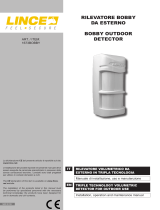 Lince 1673BOBBY Istruzioni per l'uso
Lince 1673BOBBY Istruzioni per l'uso
-
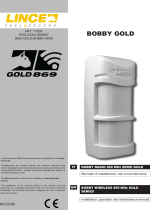 Lince 9553-GOLD-BOBBY-AM-E Istruzioni per l'uso
Lince 9553-GOLD-BOBBY-AM-E Istruzioni per l'uso
-
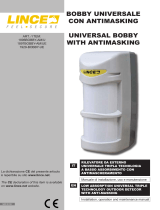 Lince 1897BOBBY-AM/UE Istruzioni per l'uso
Lince 1897BOBBY-AM/UE Istruzioni per l'uso
-
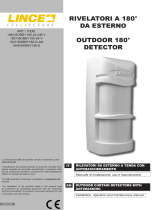 Lince 1947-BOBBY180-E-AM Istruzioni per l'uso
Lince 1947-BOBBY180-E-AM Istruzioni per l'uso
-
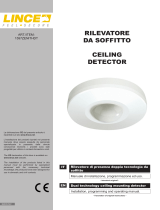 Lince 1597ZENITHDT Istruzioni per l'uso
Lince 1597ZENITHDT Istruzioni per l'uso
-
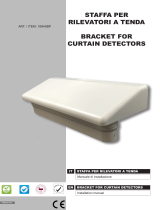 Lince 1962-SBP-M Istruzioni per l'uso
Lince 1962-SBP-M Istruzioni per l'uso
-
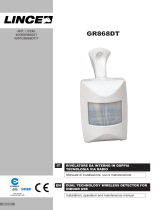 Lince 4058GR868DT Istruzioni per l'uso
Lince 4058GR868DT Istruzioni per l'uso
-
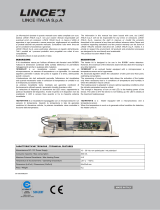 Lince 1819KR-KIT Istruzioni per l'uso
Lince 1819KR-KIT Istruzioni per l'uso
-
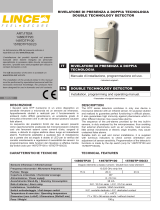 Lince 1497DTP100 Istruzioni per l'uso
Lince 1497DTP100 Istruzioni per l'uso
-
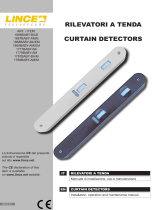 Lince 1866BABY-BA/E Istruzioni per l'uso
Lince 1866BABY-BA/E Istruzioni per l'uso
Altri documenti
-
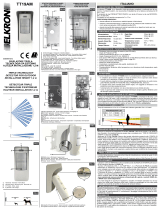 Elkron TT19AM Guida d'installazione
Elkron TT19AM Guida d'installazione
-
Ksenia velum DT + AM User And Installer Manual
-
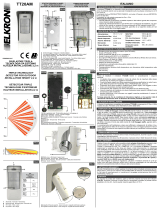 Elkron TT20AM Guida d'installazione
Elkron TT20AM Guida d'installazione
-
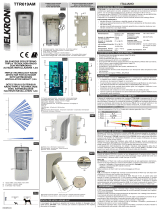 Elkron TTR619AM Manuale utente
Elkron TTR619AM Manuale utente
-
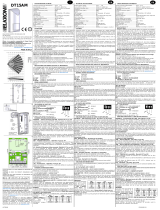 Elkron DT15AM Guida d'installazione
Elkron DT15AM Guida d'installazione
-
Ksenia UNUM User And Installer Manual
-
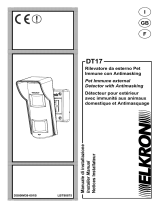 Elkron DT17 Guida d'installazione
Elkron DT17 Guida d'installazione
-
CAME PROXINET Guida d'installazione
-
Vimar 03835 Manuale utente
-
AVE AF969F Manuale utente






























